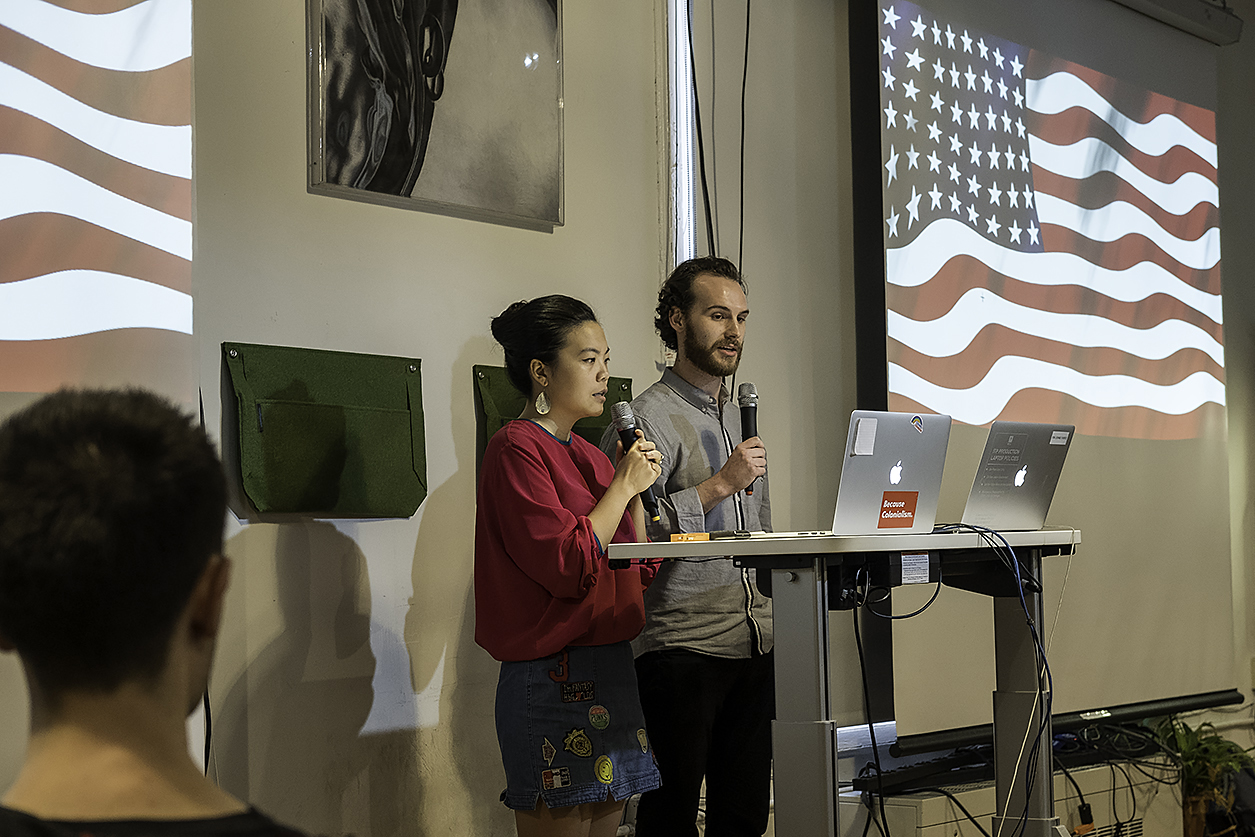 (Me and my partner reading my poem Speak Like an Immigrant at ITP, NYU)
(Me and my partner reading my poem Speak Like an Immigrant at ITP, NYU)Python Poetry
2017This is a series of procedural poetry built out of found texts.
My interests were:
How can one use words as a texture for creative expressions?
What role does language play in our misunderstanding of ideologies?
The series consists of three poems:
Cracking
Neutralizer
Speak Like an Immigrant
Cracking

On February 7, 2017, scientists discovered the rapidly growing crack on Antarctica’s fourth-largest ice shelf, the Larson C shelf, has grown 17 miles in the last two months. Cracking is a generated poem that simulate the crack and the ice melting at Antarctica with words and space. The text was originally taken from Wikipedia page List of
Antartica Ice Shelves.
A large section of Larson C shelf broke away in July, 2017.
![]()
Antartica Ice Shelves.
A large section of Larson C shelf broke away in July, 2017.
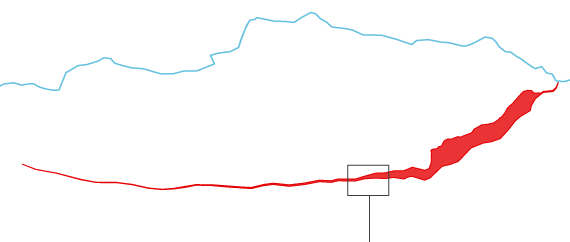

Neutralizer
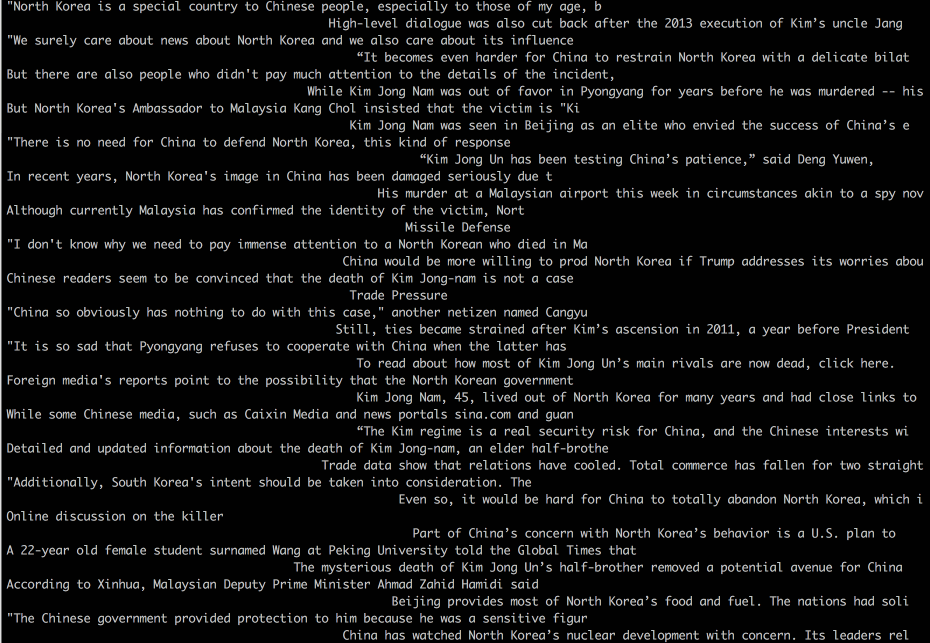
Neutralizer is a collision experiment.
I ask myself, who or what do I want to connect? Or rather, who or what do I think are poorly connected? I thought about ideologies cross culturally and environmentally: how do people from different environment view the same things completely differently? What are the connectors that are malfunctioning here?
Eventually, I found myself blaming the use of language in our cultures, media particularly. I then went on to different news websites and searched for the same headliners. Expectedly, results came back vastly different. Take Feb 22, 2017 as an example, one common headline was found in both Chinese and the U.S. media: “the assassination of Kim Jung Nam might affect the relationship between China and North Korea”. Here are the headlines about the same news from a Chinese news site and a U.S. site, respectively:
Chinese site (People’s Daily):
![]()
I ask myself, who or what do I want to connect? Or rather, who or what do I think are poorly connected? I thought about ideologies cross culturally and environmentally: how do people from different environment view the same things completely differently? What are the connectors that are malfunctioning here?
Eventually, I found myself blaming the use of language in our cultures, media particularly. I then went on to different news websites and searched for the same headliners. Expectedly, results came back vastly different. Take Feb 22, 2017 as an example, one common headline was found in both Chinese and the U.S. media: “the assassination of Kim Jung Nam might affect the relationship between China and North Korea”. Here are the headlines about the same news from a Chinese news site and a U.S. site, respectively:
Chinese site (People’s Daily):
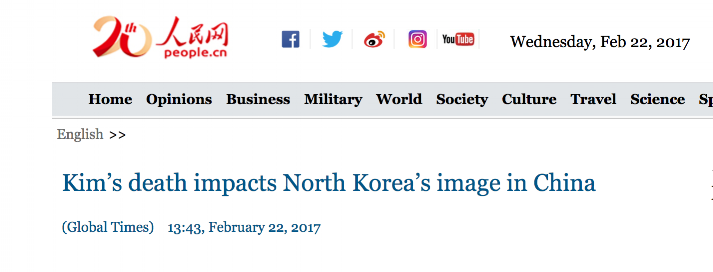
U.S. site (Bloomberg):

Needless to say, they are different (if not other things). Could I “connect” them?
Meanwhile, I think in most cases, especially when it comes to physical connections, we would like to see connectors acting seamlessly, let it be a conversation with a stranger that just “feels right”, or a plug that fits perfectly into an outlet. However, in an art context, there is also undeniable power in bringing things together by force, intentionally not quite smoothly – juxtaposition, as we call it.
I decided to create a python program that merge different texts together by force. Or rather, let them collide into each other. With such force visually, I’m interested to see what results I can bring to fill this communication gap.
I placed the two texts side by side (in this case, People’s Daily on the left, Bloomberg on the right), randomized them by sentences, and let them collide.
The same program can be applied to other texts as well.
Speak Like an Immigrant
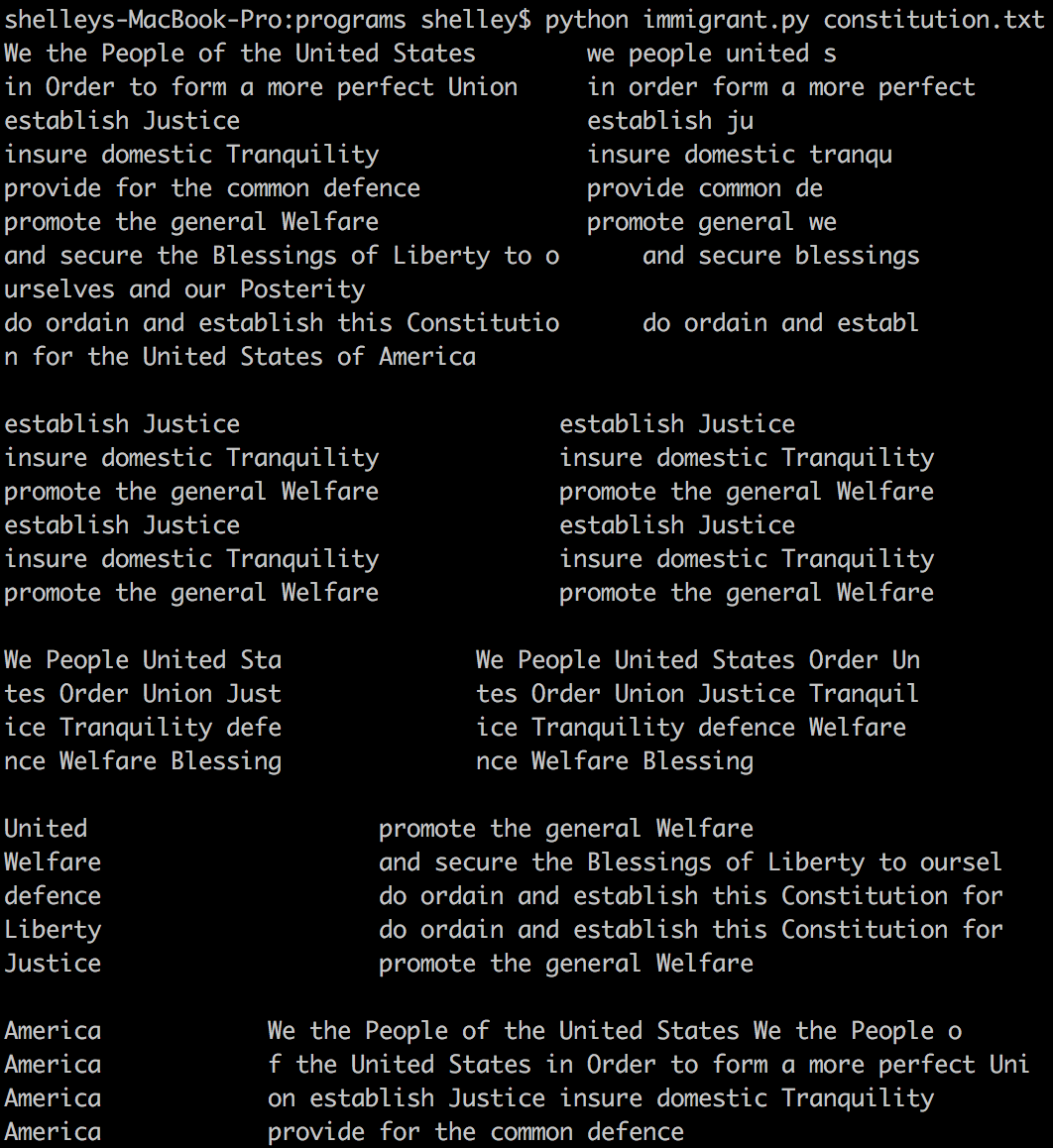
For the final project of this series, I decided to continue the process of creating poetic visual structures using space.
For the content, I wanted to simulate the experience of speaking English as a foreign language. To maximize the effect, I chose to create the form of a “dialogue” between two parties: one speaking English as a native speaker, the other as a foreigner. I decided to build my program around source texts that are “dramatically American”. For example, a few texts I tried are the U.S. Constitution, the lyrics of Star-Spangled Banner, and the Declaration of Independence.
For the content, I wanted to simulate the experience of speaking English as a foreign language. To maximize the effect, I chose to create the form of a “dialogue” between two parties: one speaking English as a native speaker, the other as a foreigner. I decided to build my program around source texts that are “dramatically American”. For example, a few texts I tried are the U.S. Constitution, the lyrics of Star-Spangled Banner, and the Declaration of Independence.
We the People of the United States
in Order to form a more perfect Union
establish Justice
insure domestic Tranquility
provide for the common defence
promote the general Welfare
and secure the Blessings of Liberty to ourselves and our Posterity
do ordain and establish this Constitution for the United States of America
I also did some research on some common mistakes people make when speaking English as a foreign language. My poems of the immigrant voices adapted to these rules accordingly. They include:in Order to form a more perfect Union
establish Justice
insure domestic Tranquility
provide for the common defence
promote the general Welfare
and secure the Blessings of Liberty to ourselves and our Posterity
do ordain and establish this Constitution for the United States of America
- the missing of “the”s and “a”s
- the mis-use of pronouns, prepositions
- the difference between singular and plural forms
- the changing between tenses
Here are a few outcomes I enjoyed (source taken from the U.S. Constitution):
![]()
![]()


Technology used:
Python
SpaCy